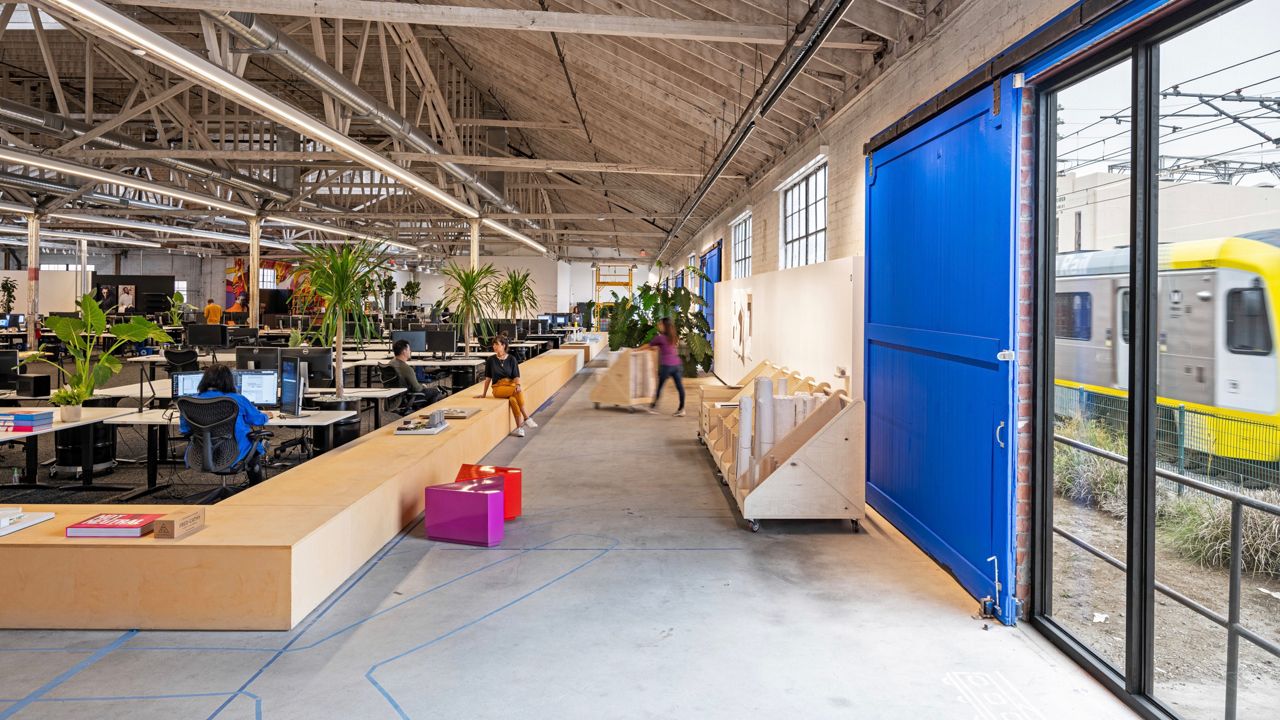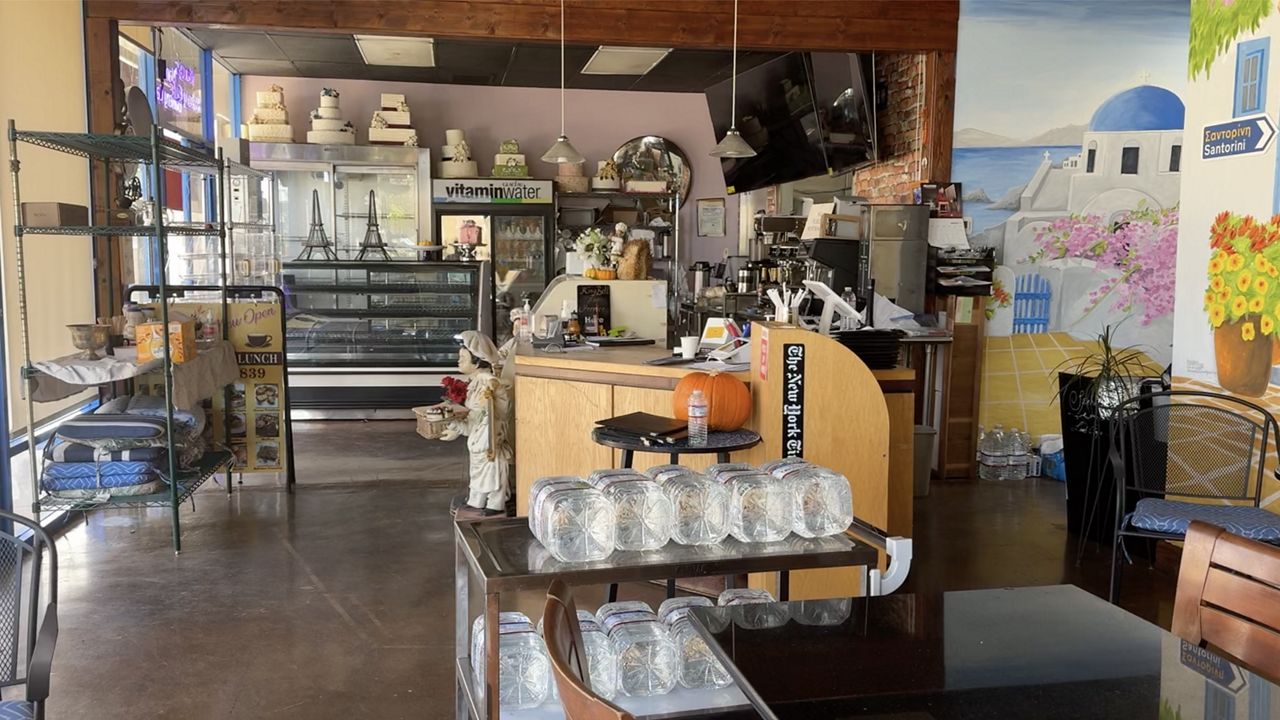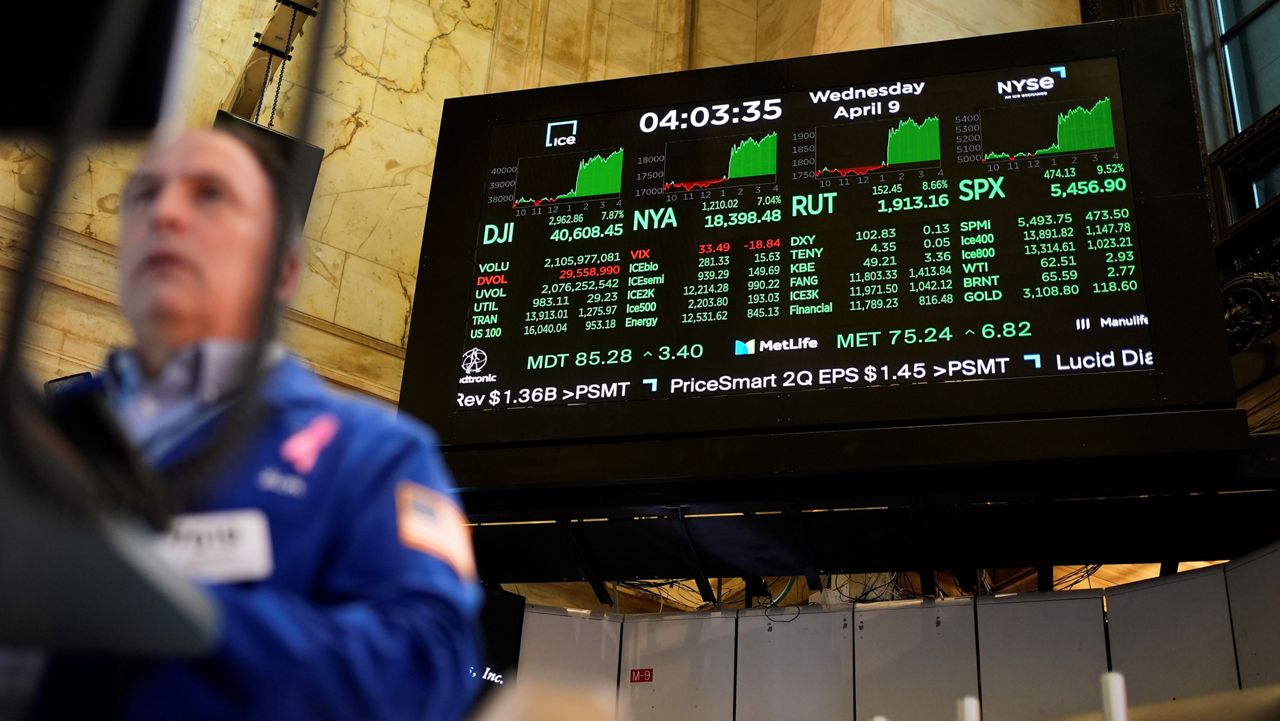This story is part of Spectrum News' special reporting on the coronavirus pandemic in Southern California.
LOS ANGELES — Three months into the coronavirus pandemic lockdown last year, James Segil's company phone started ringing off the hook, and the emails began flooding in.
Prospective clients nationwide were inquiring Segil about how to safely reopen their office, retail, and other buildings for their workers amid the pandemic and beyond.
"They were asking me, 'What do I need to do to safeguard my physical space?' They wanted someone to be an expert," said Segil, the co-founder and president of Openpath, a Culver City-based company that specializes in creating mobile access control systems in buildings.
"They were asking about touchless access, occupancy management, and social distancing," Segil said. "A lot of these companies had essential workers, and they needed to adapt instantly. Others were more thinking about capital budgets and planning."
Last year was a banner year for Openpath, which raised $36 million in a funding round in the middle of the pandemic and added 24 million square feet of office building installation of their products to their portfolio.
Openpath's success highlights the changing office landscape amid the coronavirus pandemic. What once was an amenity, touchless access, and keyless entry could become necessary for offices and other buildings as the pandemic continues and slowly wanes.
Keyless access is only one of the many new tech features and upgrades that building owners have installed or plan to install into their buildings as they bring their remote workers back to the physical office space.
Facing an unprecedented modern-day global public health crisis, state and local governments mandated a mandatory shelter-in-place order in March 2020. Except for certain essential businesses, many businesses had to have their workers work remotely to slow the coronavirus spread.
This mass exodus resulted in many office buildings going vacant and dark.
According to a recent CommercialCafe report, more than 4.2 million workers over the age of 18 in the Los Angeles metro area, including Long Beach and Orange County, worked from home during the pandemic. That is about 40% of the working population in the Los Angeles metro area.
"The pandemic has changed the way we live, including how we work," the study said. "Before COVID-19, few people could imagine that more than one-third of Americans would soon be working from home."
A year later, those workers who worked from home should not expect that to be their reality moving forward, especially as the vaccine for COVID-19 is becoming more accessible, according to Steelcase's studies. Steelcase is a furniture company that also advises clients and releases studies on the office workplace.
Throughout the year, business owners and management were "trying to figure out their strategy and what is going to work for them and their culture moving forward," Christine Congdon, editor of 360 Magazine and the director of global research and communication at Steelcase, told Spectrum News. Having a vacant office is not something most businesses want.
"The one thing we need to acknowledge is that we have never been through a time like this in our history, where we've had this mass office exodus and largescale migration back to the office," Congdon said.
According to Steelcase's studies, 23% of organizations expect people to work inside the office building. About 72% of organizations surveyed would take a hybrid approach. Workers will be allowed to work from home for a few days and be required to be in the office on other days. But only 5% of organizations expect to keep their workers fully remote.
"This myth that the office is going to go away because everyone and their brothers are working from home is not what our research and business leaders are saying," Congdon said.
Congdon said employees should expect a lot of fluidity as organizations weigh the situation and create internal policies on the company's best approach and their employees moving forward.
One thing is clear that if workers are required to return to the physical office, people want to feel safe, she said.
As cases rose and the shutdown continued, building owners and businesses began to look into upgrading their office space and buildings. Among the reasons: Partly to keep employees safe but also to prevent liability and litigation. Some saw the upgrades as a necessity for building owners to attract business tenants back into their buildings.
Granite Properties last year upgraded seven office buildings in Los Angeles and Orange County as part of a portfolio-wide $10 million upgrade.
These upgrades included a new HVAC air filtration system, UV lighting, automatic doors, touchless fixtures, foot-operated door openers, and more.
In Costa Mesa, tenants at EQ Office's Canvas office campus can use their mobile phones to open their office doors and parts of the building.
Architecture firm RIOS upgraded their Los Angeles office to be more open, created collaborative spaces, upgraded their ventilation system, and put a floor to ceiling sliding glass doors.
Congdon said that better air quality inside an office and building is the most significant feature most employees want before returning to the office.
"Hands down, organizations need to focus on that," Congdon said. "Air quality and assuring employees about their air quality, which is something the office never had to do. That was not in the job description of the office."
Other features employees want are social distancing, enhanced cleaning, touchless access, and creating places inside the office where people can hang out and chat.
"There's been a sense of isolation among the employees who have been working from home this past year," Congdon said. "There's a feeling of missing their colleagues and organizational culture. Organizations need to create places within the office where people can safely gather and rebuild social relationships that have eroded in the past year."
For Segil, the co-founder of Openpath, demand has grown for his cloud-based keyless entry product. The company, founded in 2016, set year-over-year growth records and expects demand to grow.
They are forecasting for their portfolio to triple within the next two years, Segil said.
Keyless entry has been around for years, but Openpath patented a cloud-based triple unlock technology that allows an office worker to walk into their office just by waving their mobile smartphone or hand or even an elbow over a nearby access portal.
The company was already growing, but the pandemic has put pressure on office building owners and businesses to implement touchless and keyless access into their buildings.
"We are very blessed that we happen to have the right product at the right time," Segil said. "Who would have thought that touchless access would change from 'a nice to have' to a must-have. But that is exactly what happened. We've grown very fast and benefited from the urgency."
CORRECTION: A previous version of this story misstated the number of buildings Granite Properties upgraded. The error has been corrected. (March 23, 2021)










